Our 2025 agenda is here! See what's in store this May in Alexandria below.

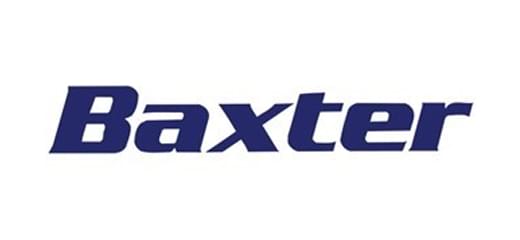
Jeff has over twenty years of experience in the pharmaceutical industry supporting E&L and analytical chemistry programs. Jeff currently manages a team of eight E&L study directors in North America, Europe, and Asia; provides leadership to develop and maintain regulatory strategies for various products; and leads efforts to use modern MS techniques to identify and quantify E&L compounds.

-520-240.jpg?ext=.jpg)
Sam started his career as an R&D chemist formulating coating formulations with the same additives that he now spends his time detecting and identifying in the extractables and leachables industry. Sam has a vast expertise in overcoming the analytical challenges that can present themselves when performing E&L data analysis. He manages an exceptional team of liquid chromatographers at VR Analytical, an E&L industry leader.

Ron Brown is a toxicologist with 35 years of experience in regulatory toxicology and risk assessment. He recently retired from the US FDA after 25 years of service and currently directs a small company, Risk Science Consortium, LLC, that provides consultation and training in toxicological risk assessment and computational toxicology. At the FDA, Ron was the senior toxicologist responsible for developing and reviewing toxicological risk assessments of extractable and leachable (E&L) compounds from medical devices. Prior to his position at the US FDA, Ron served as a Senior Associate at the ILSI Risk Science Institute. He is founding member and former President of the Medical Device and Combination Products Specialty Section of the Society of Toxicology and former President of the Dose-Response Specialty Section of the Society for Risk Analysis.

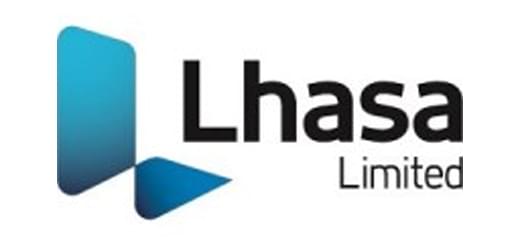
Diego holds a degree in Chemistry and a Masters in Organic Chemistry with a focus on Mass Spectrometry. Through working as a research scientist in a research institute for 6 years, Diego gained experience in supporting the chemical and pharmaceutical industry by advising and solving problems at a chemical level. Diego then joined the pharmaceutical industry as an Analytical Development Specialist, supporting the drug development process in areas such as degradation and stability studies, elemental impurities and extractables/leachables risk assessment, method development and providing scientific input to strategic decisions. Since then, Diego has gained a thorough understanding of regulatory guidelines and has also worked as a consultant to apply his experience. Currently Diego is part of the Global Alliances team at Lhasa Limited – the parent company of Consult Lhasa – and leads the API degradation profile, drug-excipient compatibility, risk of extractables and leachables, and elemental impurities risk assessment services teams at Consult Lhasa.


I completed my PhD in Analytical Chemistry at the end of 2019 and began working for Smithers in January 2020 as a Senior Analyst, specializing in LC-MS analysis. My PhD involved developing methods for metabonomic studies using high resolution LC-MS analysis. In May 2021 I became Principal Scientist and alongside other responsibilities I now use my previous method development and LC-MS experience to develop and validate methods for leachables studies in an E&L environment.


Piet Christiaens received his Ph.D. from the Analytical Chemistry Department of the University of Leuven (Belgium) in 1991. From 1992 to 1997, he was Lab Manager in two Analytical Contract Laboratories. From 1997 to 2000, he worked as an independent consultant with Shell Chemical Company in Houston, TX (US) where he conducted research on a new hydrogenation catalyst system for Hydrogenated Triblock Co-polymers (Kraton Polymers). From 2001 onwards, Dr. Christiaens holds the position of Scientific Director at Nelson Labs (formerly Toxikon Europe) where he developed analytical methods and protocols for both extractables and leachables studies for the Medical and Pharmaceutical Industries. In addition, he is also leading the R&D department at Nelson Labs, with a focus on understanding the interactions and chemistry of extractable and leachables and developing state-of-the-art analytical methodologies. In the last decade, Dr. Christiaens has been a speaker on the subject of “extractables and leachables” at over 150 Conferences and since 2014 he has been engaged in the (2-day) E/L training courses that are hosted by PDA across the Globe. In his current role at Nelson Labs Europe, Mr. Christiaens supports the Strategy and Global Business Development for Extractables and Leachables Service Offerings for Pharmaceutical and Medical Applications.


Gyorgy Vas has over 25 years of experience in scientific research, pharmaceutical and medical device product development, and laboratory management. Over 15 years was spent in a cGMP environment, where that scientific expertise was applied to solve problems related to finished pharmaceutical products and medical devices. In his current position, he is advising regulatory filing strategy for multiple clients, and his group provides solutions for mitigate deficiency letters. He is serving as an internal scientific consultant to the laboratory operations, evaluating new analytical techniques, software products for extractables and leachables testing. As part of his current role he is involved to evaluate and implement non-routine analytical instrumentations and methods for cGMP use. He published more than 20 analytical papers, related to various activities, including sample preparation, trace level method validation, molecular imaging, structure elucidation, and E&L testing. Those scientific publications papers have been cited more than 3000 times over the years.


ISteve Zdravkovic is currently a Research Scientist II at Vantive/Baxter, which he joined in February 2021. Prior to joining Vantive/Baxter, he worked for 16 years in the E/L team at PPD, Inc. In these roles, Steve has been responsible for all aspects of E/L studies with a focus on the design and execution of screening studies using mass spectrometry-based techniques. Steve has published ten peer reviewed journal articles, which pertain to various areas of research within the E/L field. Steve holds a Bachelor of Science degree in chemistry and mathematics from the University of Wisconsin – Whitewater


Candice Johnson, Ph.D. is a Senior Research Scientist at Instem. Dr. Johnson has co-authored several peer-reviewed publications and book chapters describing the implementation of in silico approaches and methodologies for gaining confidence in in silico predictions. Her work expands into novel application of in silico approaches and supporting the advancement of alternative methods. She is particularly interested in the application of computational tools to support toxicological evaluations; for example, in the assessment of extractables and leachables.


Erica L. Dahl, Ph.D., DABT is a Senior Managing Toxicologist for SafeBridge and has over 25 years’ experience in pharmacology and toxicology as a researcher, study director, and consultant. She has expertise in occupational toxicology, hazard assessment of potent pharmaceuticals, genetic toxicology, and product quality, including hazard assessments of potential contaminants identified in Extractables and Leachables studies. She is certified by the American Board of Toxicology and holds a Ph.D. in Molecular and Environmental Toxicology from the University of Wisconsin


Adam Eason is an expert in a variety of chemical testing including extractables and leachables as well as polymer testing. He has over 10 years of increasing responsibility in academic, government and CRO laboratories.
Adam has a proven track record solving customers product failure analysis on sample types ranging from polymer resins to football helmets and windshields. With support of a team of PhD chemists and access to top of line instrumentation including QToF-LCMS-UV-CAD, QToF-GCMS, thermal analysis, and spectroscopy techniques Adam is always able to answer a customers why question.
Adam currently works as Senior Study Director where he oversees more than 50 regulatory projects at once and guides a team of chemists and study directors to ensure success for both his own clients and his teams clients. As Senior Study Director Adam provides regulatory support and study design guidance for medical device manufactures as well as supporting a team of chemists with technical guidance.
Prior to working as Senior Study Director Adam was an organic chemist performing drug development. In addition, he has performed environmental chemical analysis in both government owned labs and CROs.

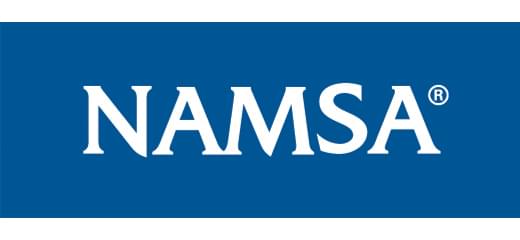
Andy Wyen is a Board Certified Principal Toxicologist at NAMSA. He has over 20 years of medical device industry experience at NAMSA. Throughout his long tenure at NAMSA, he has held positions in various divisions including Research and Development, Chemistry, Study Director, and Biocompatibility Consulting, which contributes to his well-rounded knowledge in his current position. Andy’s expertise includes In Vitro methods, In Vivo methods, analytical chemistry, chemical characterization, GLP regulation, ISO 10993 standards, biocompatibility, and toxicology.
Andy has experience with hundreds of different types of medical devices with a variety of applications that include the most invasive types of devices to the most innocuous. He has interacted on behalf of the client through meetings or written responses to regulatory agencies such as the United States FDA, European Union notified bodies, Japan PMDA, Korean MFDS, United Kingdom MHRA, and China FDA in regards to biocompatibility inquires of medical devices.
Andy obtained his Bachelor’s and Master’s Degree in Pharmacology/Toxicology from the University of Toledo (Ohio, U.S.). In 2012, he received his Laboratory Animal Technical (LAT) Certification through the American Association for Laboratory Animal Science (AALAS). In 2019, he received his Diplomate of the American Board of Toxicology (DABT) certification. Andy is an active member of the Society of Toxicology and is a non-voting member of AAMI working group 11 and 14.


Since 2016, Dmitriy Pastarnak has built and led the development of the Chemical Characterization Laboratory in Draper, Utah, a state-of-the-art facility specializing in trace level chemical analysis. Under his leadership, a team of top tier expert analytical chemists and mass spectrometrists focus on analyzing extractables and leachables (E/L), targeted analytes, and unknowns. Dmitriy's team excels in fostering collaboration and alignment among chemists, material scientists, and toxicologists to support in-house chemical characterization. They actively engage in industry collaborations, working groups, seminars, and workshops to promote sound science, streamline workflows, and prioritize patient safety

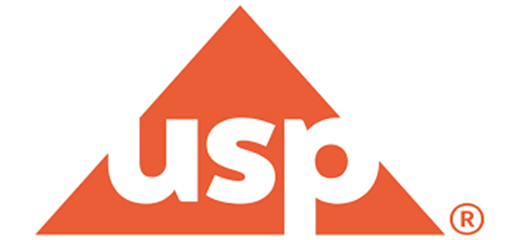
Dr. Ravi Kiran Kaja is a distinguished researcher and dedicated scientist with a Ph.D. in Analytical Chemistry and over 20 years of experience in Pharmaceutical Analytical Research (FAR&D). His career is fuelled by a steadfast commitment to enhancing patient outcomes through innovative pharmaceutical solutions.
Dr. Kaja's expertise spans Complex formulation characterization, Extractable & Leachable (E&L) studies, Pharmaceutical Manufacturing, and Science and Technology (MS&T) as well as Technology Transfer. He believes that collaboration and knowledge sharing are key to advancing the industry.
Beyond his professional endeavours, Dr. Kaja is passionate about mentoring young scientists and engaging in community outreach to inspire the next generation of researchers. His unwavering dedication to both his work and the broader scientific community has earned him respect and admiration in the field.


Born: 10.09.1981 in Piekary Śląskie, Poland
Alicja is currently employed at the Octapharma where she is responsible for material qualification at corporate level including chemical safety assessment of polymerc processing, packaging, and administration materials and the planning and supervision of extractables and leachables studies.
Prior to joining Octapharma, Alicja had a tenured position as a researcher at the French National Institute for Agricultural Research (INRA) where she investigated various possibilities to increase sustainability in the food processing industry. Alicja has compelled broad experience in material and polymer science and technology at the Institute for Composite Materials (IVW) in Kaiserslautern as well as at the Centre for Neutron Science (JCNS) and at the Institute for Nuclear Waste Disposal and Nuclear Safety (IEK-6) at the Research Centre in Jülich, Germany.
Headquartered in Lachen, Switzerland, Octapharma is one of the largest human protein manufacturers in the world, developing and producing human proteins from human plasma and human cell lines. As a family-owned company, Octapharma believes in investing to make a difference in people’s lives and has been doing so since 1983; because it’s in our blood. Octapharma owns five state-of-the-art production facilities in Austria, France, Germany, Mexico and Sweden. For more information visit www.octapharma.com.

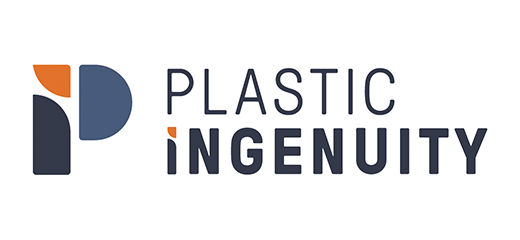
Zach is the Corporate Sustainability Manager for Plastic Ingenuity, a leading custom thermoformer based in Madison, WI, where he is responsible for helping packaging professionals realize their sustainability goals. Zach has dedicated his career of 19 years to the thermoformed packaging industry with roles ranging from product development to commercial sales.


Dr. Dujuan Lu serves as the manager for the extractables and leachables (E&L) team at the SGS Fairfield New Jersey facility as well as the global leader amongst the three centers of excellence for E&L testing. Before joining SGS, she worked at Fresenius Kabi as a research scientist, leading E&L projects to support transfusion and infusion medical device and parenteral products. She has extensive CRO and pharmaceutical/medical device industry experience with more than 500 E&L projects on a broad range of packaging systems, including process materials, pharmaceutical finished packaging, and medical devices. As a subject matter expert in the E&L field, she is frequently presenting at various conferences as invited speakers and technical session chairs. She was named one of the top 60 most influential people working in the pharmaceutical industry in the Medicine Maker’s 2020 power list.
Dr. Lu obtained her PhD in analytical chemistry from the University of Pittsburgh and BS in chemistry from Nanjing University. She has authored more than 15 high-impart journal publications with more than 300 citations. She is serving as an expert reviewer for more than 10 prestigious journals in the field of analytical chemistry and pharmaceutical science.

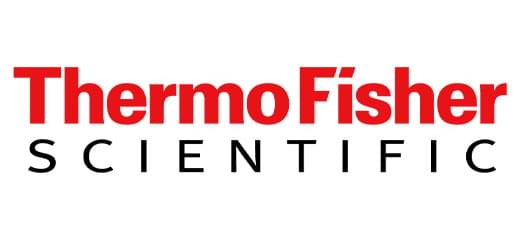
James has worked in the Pharmaceutical and Medical Device area for over 30 years. He has had diverse technical and managerial roles spanning Pharmaceutical Development, Medical Device Manufacture/Testing and Contract Laboratory Services. His employers include GSK, Boehringer Ingelheim Pharmaceuticals, Catalent Pharma Solutions, Nelson Laboratories and Thermo Fisher Scientific. James’s expertise includes design of Extractable and Leachable controlled extraction studies, in-use studies, method development/validation, stability and specification setting for release components. He has worked with inhalation, parenteral, and ophthalmic drug products to successfully produce many FDA approved pharmaceuticals. James is Co-Chairman of the IPAC-RS Materials Working Group. He has served on the Organizing Committee for IPAC-RS Supplier Forum and USP Expert Panel Member for USP <1664>, “Assessment of Drug Product Leachables Associated with Pharmaceutical Packaging/Delivery Systems”. In addition, he has over 15 presentations and 5 publications in the field of Extractables and Leachables.

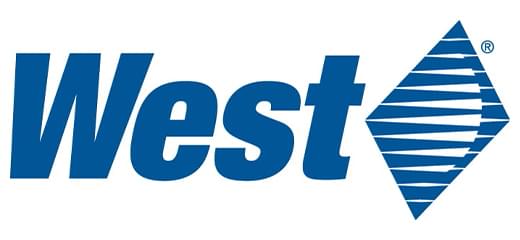
I’m currently the E&L Technology Manager at West. Over the course of my 20 years of industry experience, I have held various analytical lab and lab management positions mostly in E&L, but also in QC and CCI. I’ve previously worked as a director at Boston Analytical, a lab supervisor at GSK, and a senior chemist at Eurofins. I hold a bachelor’s degree in chemistry and a master’s degree in data analytics both from Penn State.